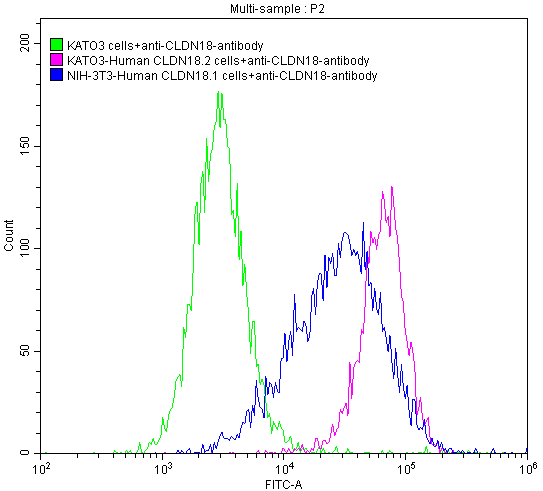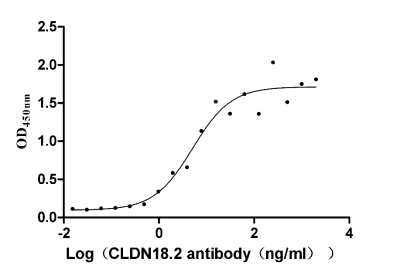The humanized IgG1 recombinant CLDN18 monoclonal antibody specifically targets the tumor-associated antigen (TAA) CLDN18 and possesses potential immunostimulating and antineoplastic activities. It is purified through the affinity-chromatography method. This CLDN18 antibody shows reactivity with human CLDN18.2 protein and has been validated in ELISA and FC applications. It may be used to kill CLDN18.2-expressing tumor cells and inhibit cell proliferation.
Intrinsic characteristics of CLDN18.2 including involvement in tumor development and progression and availability for monoclonal antibody binging due to its exposed extracellular loops, make CLDN18.2 become an attractive molecule for targeted therapy and push the further development of CLDN18 antibodies. Chin J Cancer Res showed that zolbetuximab, a chimeric IgG1 CLDN18.2 monoclonal antibody, can specifically bind to CLDN18.2 on the tumor cell surface, hence eliciting ADCC, CDC, apoptosis and suppressing cell proliferation. Preclinical studies have successfully validated that zolbetuximab can eliminate cancer cells and control diseases. Prabhsimranjot Singh et al. found that claudiximab, a CLDN18.2 monoclonal antibody, played immune-stimulating and antitumor roles in animal models with gastric cancer.







